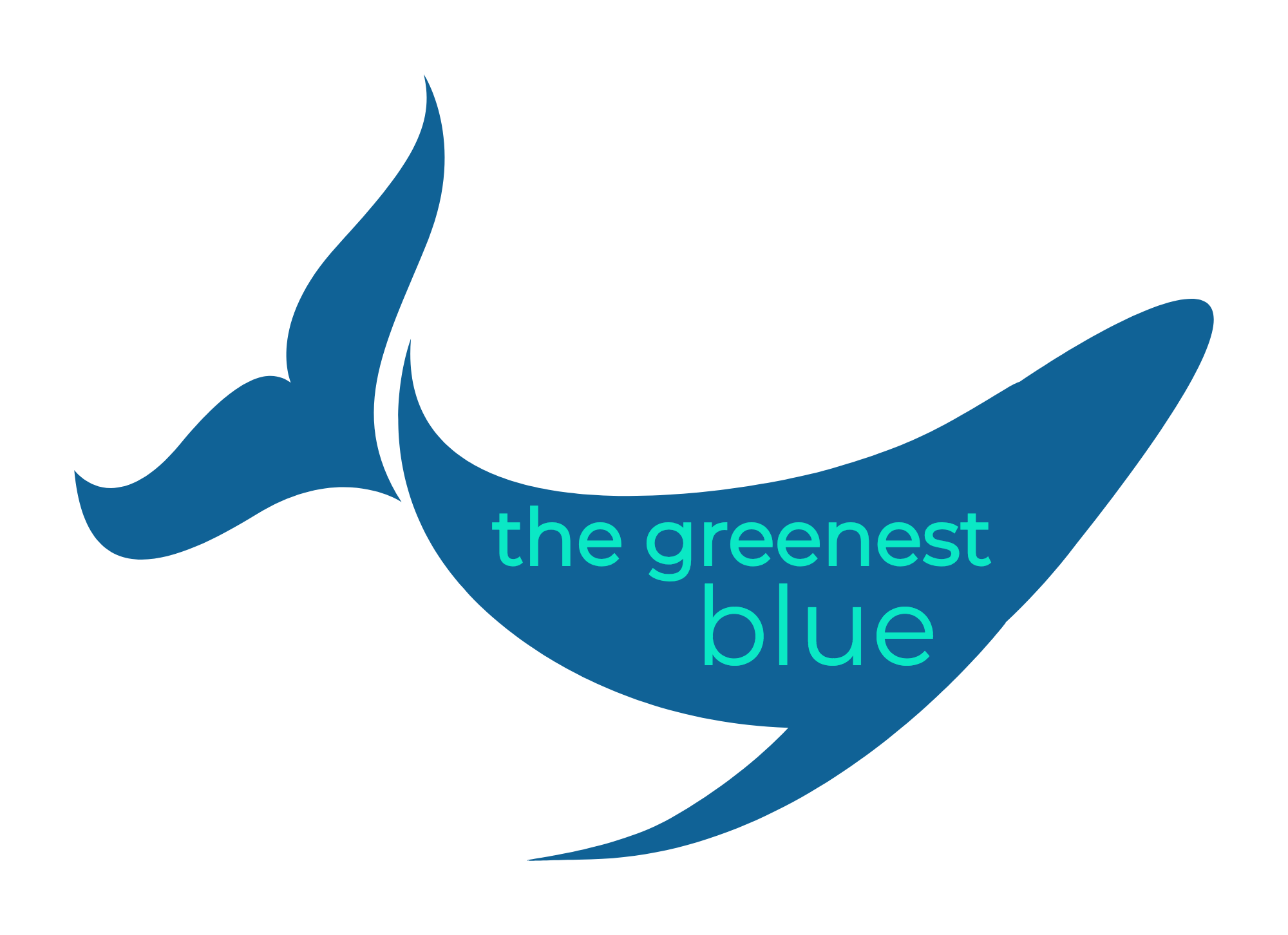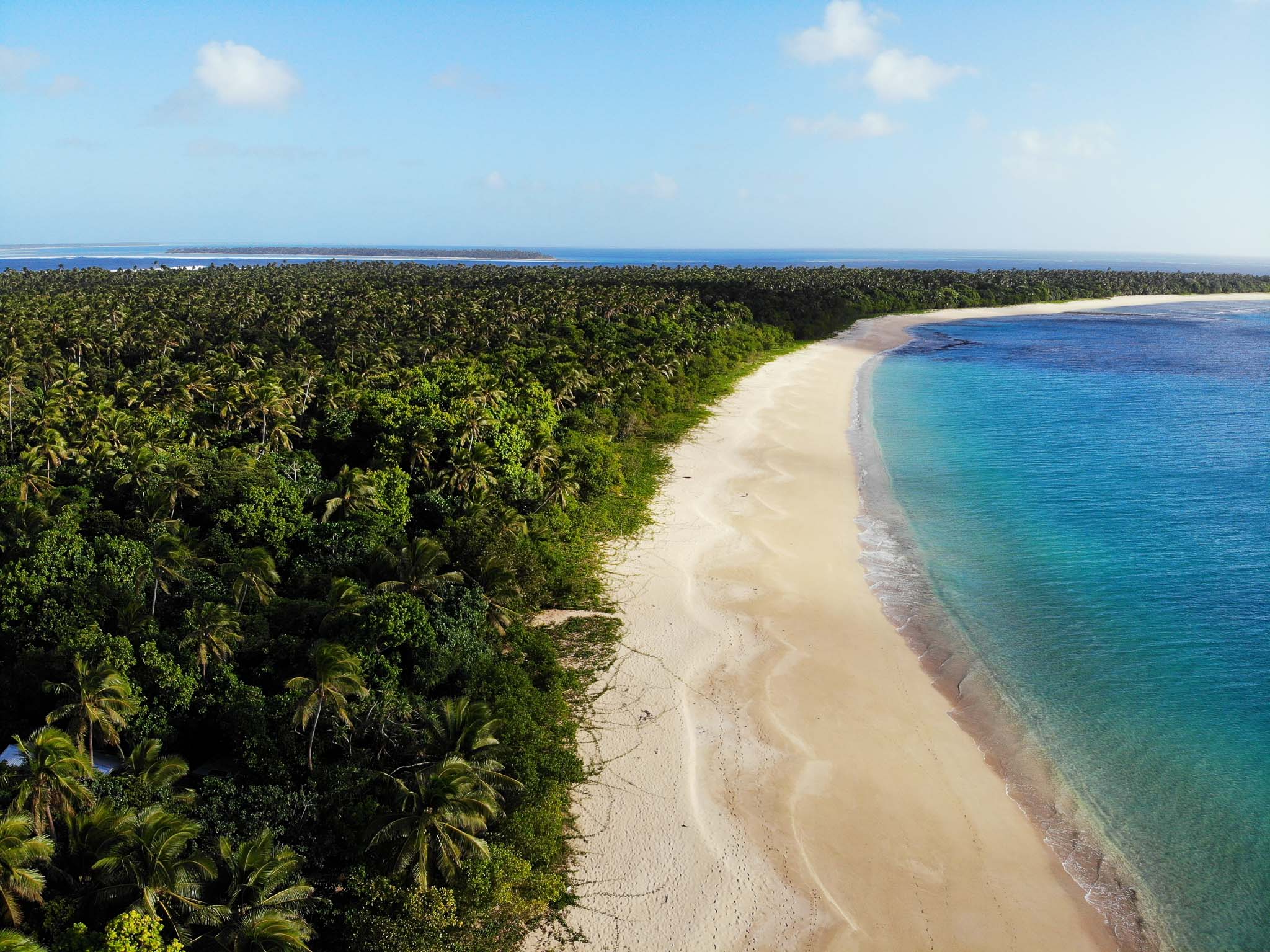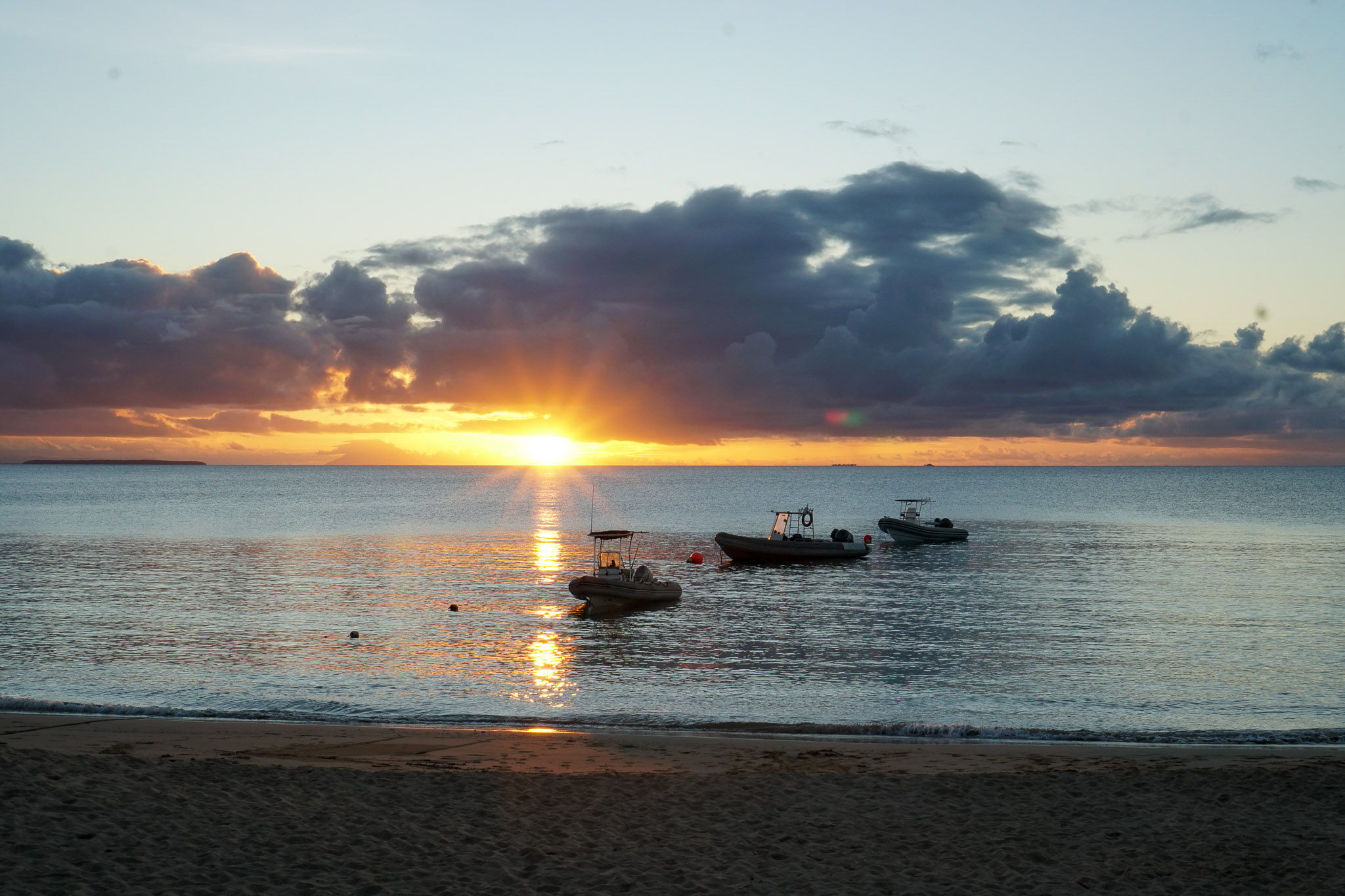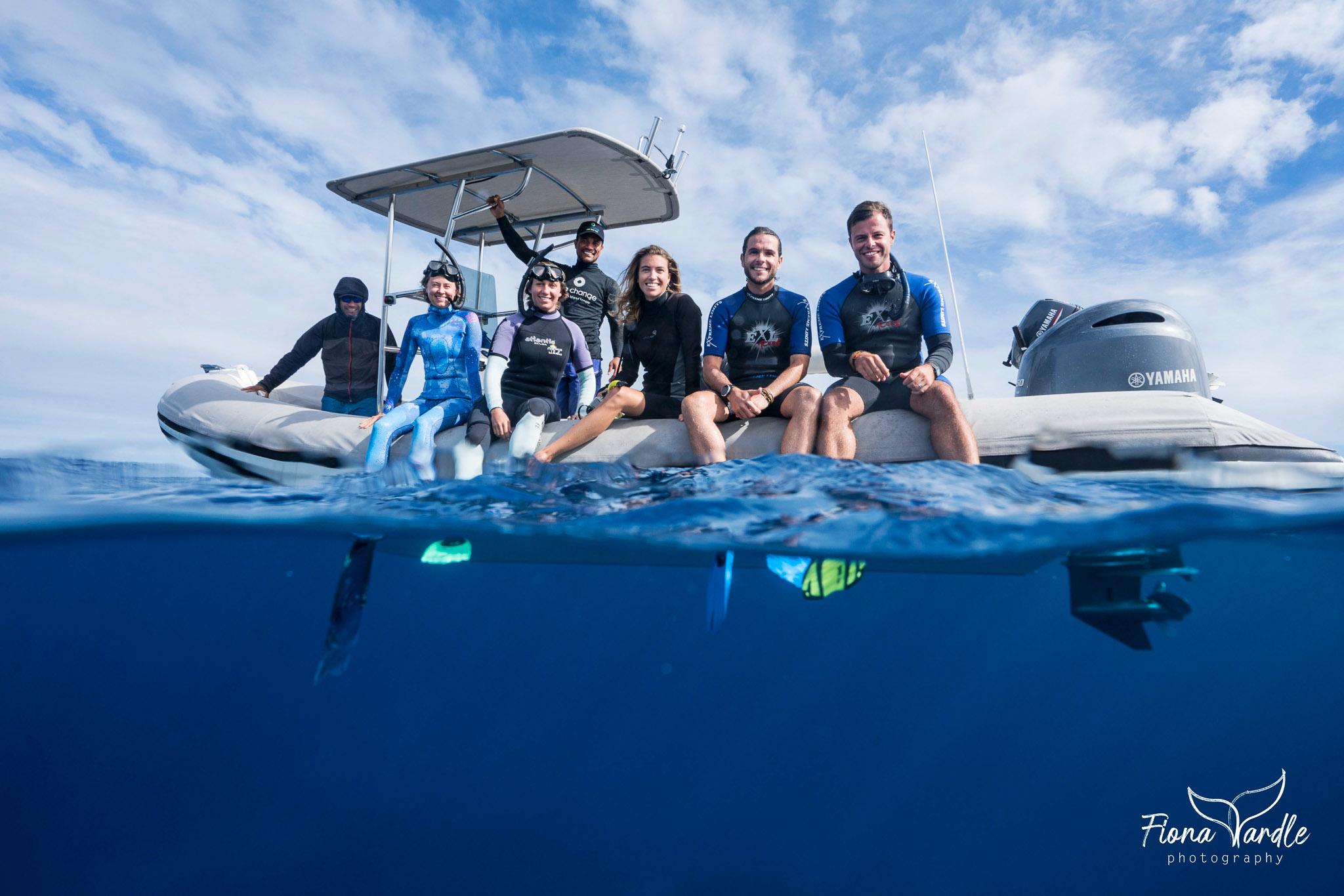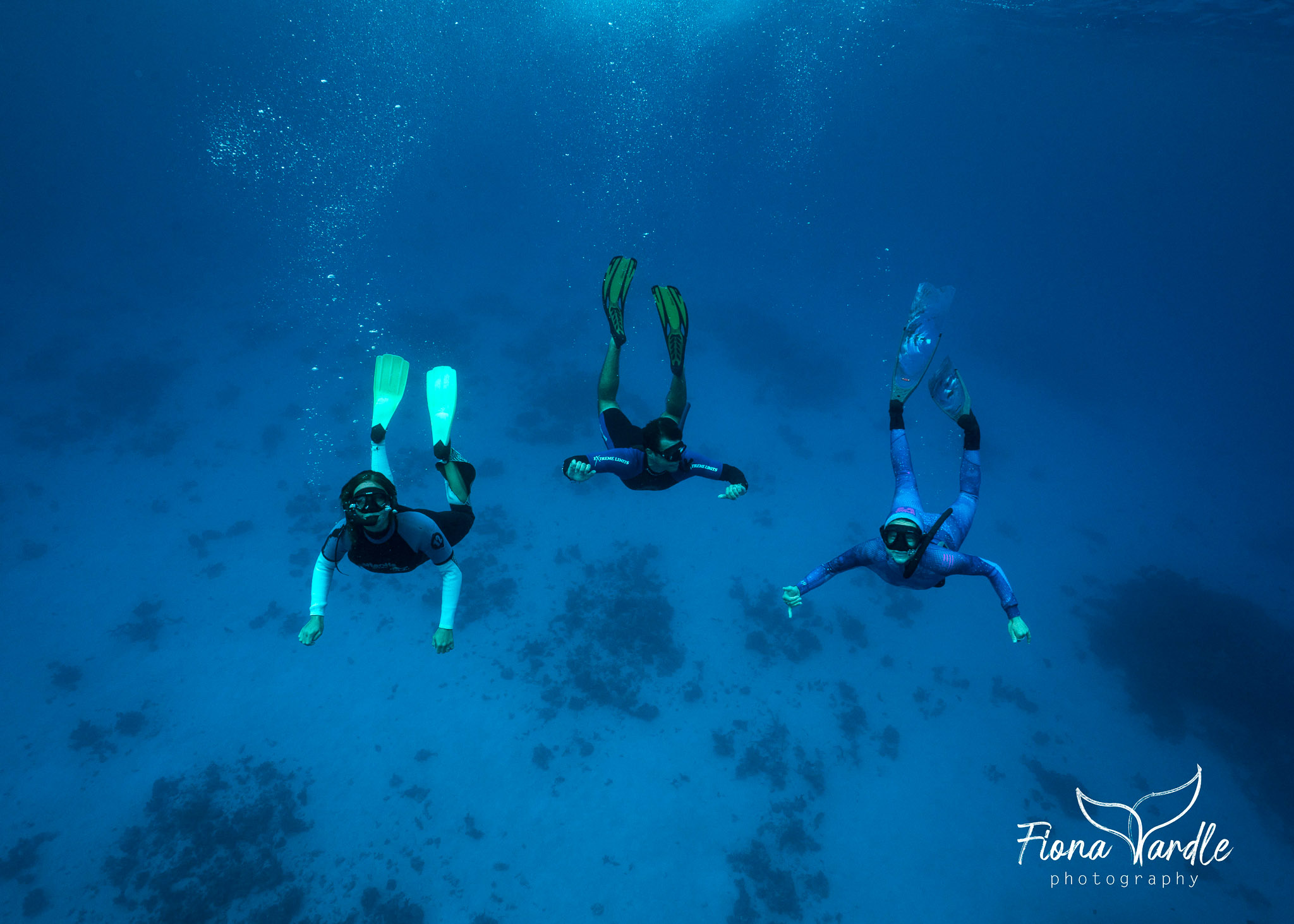Getting our Feet Wet for Whale Swims - Week 2 in Tonga
Things have gotten busier around Sea Change this week! More and more guests are arriving, and a somewhat spontaneous wedding ceremony was held last Saturday alongside a Tongan feast. It’s nice to see some new faces around the property, and with each new group comes more bubbling enthusiasm, different stories, and fresh conversations to be had. I’m excited to meet and chat with a lot of these people out on the whale swims this season. It’ll be interesting to see what their experiences with whales have been prior to this visit. I imagine a lot of them might be seeing whales for the first time? Who knows!
We went out on a trial tour last week to get our feet wet and dabble in the logistics of everything. And although we didn’t get in the water with any of the whales, we did see at least six! We’ve since been out on our first “real” swims of the season, and the number of whales seems to be increasing every single day. More on that later.
Whales, Whales, Whales
Humpback whales symbolize a lot for me; I’m not even sure how to describe the waves of emotion that wash over me the first time I see a whale each season. It’s a strange combination of nostalgia for my first encounters with them as a guide in Maui, mixed with admiration of their resilience as a species, combined with a brave hope for the future of our oceans, topped off with wild intrigue at their intelligence, grace, and their sheer size and beauty.
Operating Humpback Whale Swim Tours
The whale swim tours we offer are wonderfully intimate, with a maximum of eight swimmers on a boat, but typically less. At any one point in time, only four are allowed in the water with the guide. As guides, Fi and I both took the official Tongan Whale Guide Course at the end of May, which was held in Ha’apai. It took a bit over a week and was quite thorough, going over the regulations we’re to follow, the biology and history of Tonga’s humpback whale population, the logistics and safety concerns of putting swimmers into the water near these massive animals, strategies for interpretive guiding, and we also completed some in-the-water swim evaluations and life-saving scenarios. Anyone who wants to work as a whale guide in Tonga must complete this course.
I think it’s a good idea for the guides in Tonga to have some sort of cohesive training to make sure that operators are employing qualified guides and that the regulations are common knowledge. We also made about 18 new best friends that week; everyone in the course is so like-minded!
I’ll absolutely be offering footage and photos of my adventures out here and the encounters we have, and hopefully linking you to some of Fi’s amazing photography as well. She’s bubbling with excitement over her new underwater housing this season and has already gotten some incredible snaps. Check out her Instagram profile here for some pretty amazing shots, and they’ll be featured on The Greenest Blue as well.
In Other News - Negative Effects of Whale Swims
There’s been a new paper released recently about the effects of swimming with whales in Tonga. The researchers were assessing the behavioral responses of humpback whales to vessel and swimmer approach. The studies were conducted throughout the 2016 and 2017 humpback breeding seasons on the south side of the island group of Vava’u, which is where most of the whale swim operators (more than 20) are based in Tonga.
Vava’u is also where the first Tongan swim-with operations began back in 1993. It currently has more operators offering swim-with whale encounters than any other whale watching region worldwide. There’s definitely been an explosion in popularity for this type of marine tour, and a lot of business owners are probably recognizing this lucrative opportunity. There’s no shortage of interest – more and more tourists are flocking to Tonga’s beautiful tropical waters to watch these humpbacks in liquid outer space.
Twenty (or more). That’s a lot of operators, and as you’d expect, the findings from the study weren’t great in terms of effects on whale behavior. The study found many incidents of avoidance behaviors from the whales, especially mom and calf pairs, during both watching and swimming tours. It also documents a very low level of compliance with Tongan swim-with regulations, particularly with regard to the minimum resting time for whales (90 minutes) between interactions with commercial vessels.
Not great. This sounds like a prime example of a marine species being exploited for financial gain. Where do we go from here, and how can we still offer these incredible encounters without compromising the wellbeing of the species that has already gone through so much at the hands of humankind?
This Population of Whales is Teetering
A big difference between the South Pacific Tongan whale population and the North Pacific population I observed in Maui is that the Tongan sub-population shows very little evidence of recovery since the end of the whaling era. The numbers are completely different. The last estimates of the North Pacific population were well over 20,000 whales. The Tongan population is hovering just over 2,000. Yikes.
It All Goes Back to Mindful Travel and Choosing Ethical Operators
The Ha’apai island group where I am working has much fewer operators than Vava’u, but I’m not applauding anything just yet. I am forever curious about immersive interactions with marine mammals (the dream of many a traveller!) but also cautious, because a tour operated out of greed and desperation is destined for failure and has an overwhelming potential to cause damage to the ecosystem and the target species.
This isn’t about Instagram photos or bucket lists. This is about existing in harmony with a marine animal we share so much in common with. Whale watching and swimming is arguably better for the whales than hunting them (hellloooo, Japan), and can be even more lucrative for the local communities, but where do you draw the line?
My dream for the season is that we follow all the regulations set in place by the Tongan government, and encourage further efforts for operators to self-regulate with additional guidelines (like no free diving next to the whales, as that is their domain and they didn’t necessarily invite you into their bubble!). Swimming with whales is a privilege, not a right.
Looking at the Benefits of Whale Swims
Glenn Edney operates whale swim tours here in Ha’apai and is convinced that “the key to avoiding, or at least minimizing, any negative impact is to have a passive approach. Whether observing from a boat or swimming in the water with them, remaining passive and allowing the whale to dictate what happens next often results in prolonged and hugely satisfying encounters.” Humpback Whales of the South West Pacific
Letting the whale dictates what happens next…that’s an idea that I want every whale watch, and every whale swim, to be centered around. I do believe that humpback whales can be genuinely curious, inquisitive animals that more than likely can recognize a kindred spirit in us. I think that you can have some mind-blowing encounters with them, real reciprocal interactions, if you give them space, respect, and just observe.
This also means not getting in the water with every whale you see. It means being extremely picky about which whales you do decide to attempt a swim with. This is their breeding ground, and sometimes mom needs space to bond with her calf, or the males just want to bully each other up and get it on with some ladies, or a pair of juveniles are simply traveling because they’re hungry and it’s time for them to get back to Antarctica. It’s about watching their behavior and determining if the whales are relaxed and perhaps curious. And even after you enter the water, it’s about passively waiting for them to do whatever they want to do.
Finding that balance in ecotourism is critical - there is so much potential to raise awareness for the plight of the ocean through these tours, but also a very real need to minimize any negative impacts on the whales.
I’m excited to keep you updated with my thoughts and musings as the season goes on. I am operating here from my heart, as is the rest of my team, with the whales’ best interests always at the forefront. I’m not going for a viral Youtube video or a NatGeo worthy shot. I just want to help people foster their connection with the natural world, as well as deepening my own. That is what is going to make a huge difference in raising awareness around ocean conservation.
Bring it on, whale season 2019.
Sources: Fiori L, Martinez E, Orams MB, Bollard B (2019) Effects of whale-based tourism in Vava’u, Kingdom of Tonga: Behavioural responses of humpback whales to vessel and swimming tourism activities. PLoS ONE 14(7): e0219364. https://doi.org/10.1371/journal.pone.0219364
